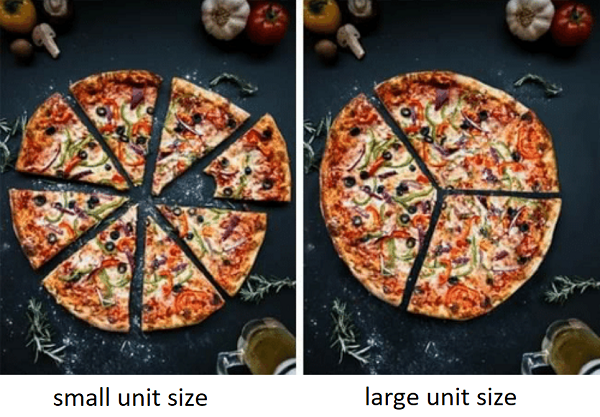Gewicht en voedselverspilling beteugelen via portiegrootte, eenheidsgrootte en zelfbediening

Is het mogelijk om voedselverspilling tegen te gaan, de hoeveelheid voedsel die consumenten eten te verminderen en tegelijkertijd consumenten tevreden te houden? Amber Werkman en haar collega’s onderzochten dit vraagstuk en kwamen met een oplossing. In lijn met de uitspraak ‘het is vaak makkelijker om iemands omgeving te veranderen dan om iemands gedachten te veranderen’, biedt hun onderzoek mogelijkheden voor consumenten en bedrijven om hun voedselomgevingen op zo’n manier vorm te geven dat men én lekker en gezond kan eten én tegelijk minder verspilt.
Voedselverspilling en overconsumptie
Als het gaat om voedselconsumptie, hebben veel samenlevingen tegenwoordig te maken met twee uitdagingen: voedselverspilling en overconsumptie. Binnen de voedselvoorzieningsketen gaat ieder jaar een derde van al het eetbare voedsel dat is bestemd voor menselijke consumptie verloren. Consumenten zijn verantwoordelijk voor ongeveer 65 procent van de totale voedselverspilling en zijn daarmee de grootste verspillers.
Overconsumptie is een van de belangrijkste oorzaken van obesitas, een volksgezondheidsprobleem in verschillende landen over de hele wereld. Het aantal mensen dat wereldwijd aan obesitas lijdt, is sinds 1975 bijna verdrievoudigd.

Zelfbediening
Werkman leg uit: “We zochten naar manieren om de voedselconsumptie en voedselverspilling te verminderen zonder afbreuk te doen aan consumententevredenheid. Uit eerder onderzoek is al bekend dat mensen minder voedsel consumeren als het eten wordt aangeboden in kleinere eenheidsgroottes. Met eenheidsgrootte bedoelen we de grootte van de eenheden waarin een bepaalde hoeveelheid eten is opgedeeld. Twee pizza’s kunnen bijvoorbeeld dezelfde (portie)grootte hebben, maar een andere eenheidsgrootte (acht stukken versus drie stukken). Omdat kleinere eenheden ervoor zorgen dat consumenten minder van hun hele portie eten, neemt de voedselverspilling van deze portie toe.”
"We wilden onderzoeken wat er zou gebeuren als consumenten zichzelf kunnen bedienen en dus zelf de gewenste hoeveelheid voedsel kunnen pakken of op kunnen scheppen. Onze bevindingen laten zien dat bij zelfbediening met kleine eenheden, ten opzichte van grotere eenheden, consumenten kleinere hoeveelheden voedsel pakken en in totaal minder voedsel consumeren. Ook wordt de voedselverspilling gereduceerd terwijl de consumententevredenheid behouden blijft. “Restaurants kunnen bijvoorbeeld de zelfbediening van kleinere eenheden faciliteren door gerechten aan te bieden die zijn bedoeld om te delen, iedere tafelgenoot kan dan de eigen gewenste hoeveelheid van het eten nemen.”
Meer betalen voor kleinere porties
Werkman wil haar onderzoek in dit domein voorzetten.“Voortbouwend op dit onderzoek, zou ik nu graag uitzoeken hoe deze concepten het koopgedrag van consumenten beïnvloeden. Zijn consumenten bijvoorbeeld bereid om meer te betalen voor voedingsproducten die verpakt zijn in kleinere porties of eenheden? We nemen aan dat deze verpakkingen de zelfcontrole van consumenten op het vlak voedselconsumptie en voedselverspilling kan verbeteren.”
Neem voor meer informatie contact op met Amber Werkman.
Het wetenschappelijke artikel is te lezen op ScienceDirect.com.
Meer nieuws
-
09 december 2025
Zijn robots de oplossing?
-
10 november 2025
Decentralisatie van de jeugdzorg
